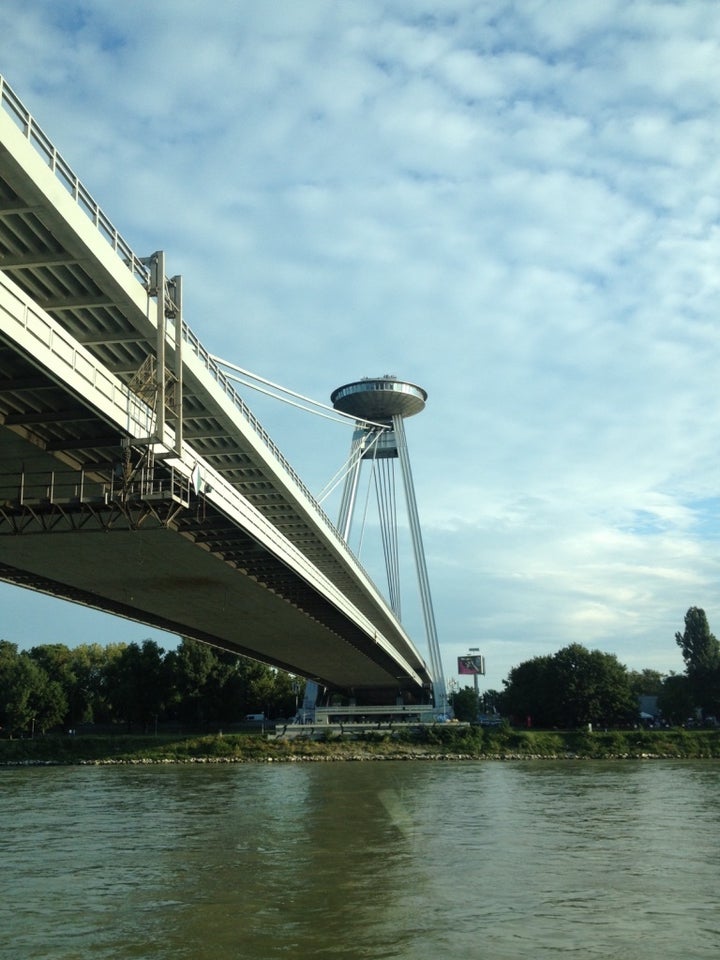
“Slavic cool” is everywhere these days. As Seth Sherwood writes in a recent New York Times travel article, it is especially evident in Belgrade, former capital of Communist Yugoslavia and today a burgeoning economic and cultural hub of the Balkan revival. The fourth-century city features many stunning cultural attractions. From Kalmegadan Park, the historic center, to the still unfinished St. Sava cathedral, Belgrade shimmers in a post-Communist, post-civil-war dawn. Yet on a recent trip to the Balkans including not only Belgrade but also other Balkan cities, I felt a broader range of temperatures, many chillier than expected.
Belgrade is situated on the confluence of the Sava and Danube rivers. On the Sava, there are dozens of party barges, where youth from all over Europe dance the night away to the pounding rhythms of disco and techno music. Barge culture is a fitting symbol of Belgrade’s status as the Balkan party capital. But at the party barges one also meets the limits of Slavic cool. Hearing the barges from across the river late one night, I couldn’t help feeling they were a desperate attempt to flee the past and focus on the transient pleasures of the moment.
For centuries, the Balkans were a crossroads in the unceasing battle of empires. Belgrade, Prague, Bratislava, and Sofia are etched with imperial desire. One sees historical traces of Celtic, Roman, Byzantine, German, Austrian, Hungarian, Russian, and Ottoman ambition in the culture and architecture of these cities. Outside my hotel in Sofia, the Bulgarian capital, the parking lot was sliced in half because Roman ruins from Constantine’s time had been discovered only a few yards from the hotel entrance. The archeological dig going on below my window reminded me that the Balkans are a vast palimpsest of human accomplishment and suffering.
In Belgrade, we had a skillful guide (call him Anton), a Serbian in his late thirties. Anton was enthusiastic about Belgrade’s opportunity to escape its many pasts. He recognized contemporary Serbia’s economic problems, above all its loss of educated young people to Austria, Germany, and beyond. But he also thought that post-Communist and post-Milosevic Serbia was a markedly more humane and freer society. He had a sharp and ironic sense of humor, a signature of Slavic cool. He had wonderful jokes about the Yugo, the Communist-era car designed to bring motoring to the working masses. (What do we call a Yugo at the top of a hill? A miracle. What do we call two Yugos at the top of a hill? A mirage.)
Yet Anton also referred frequently to arguments he’d had with his parents, who remain loyal to the memory of Tito. The Yugoslav dictator was widely popular across the region in World War II, when he led heroic resistance to Nazi occupation. He ruled postwar Yugoslavia with a mix of material incentive and brutality. He was a bon vivant who enjoyed dining not only with heads of state but also writers, filmmakers, and actresses like Gina Lollobrigida and Sophia Lauren. In Belgrade bookstores one can find Tito’s Cookbook, which features recipes from some of the more memorable dinners the dictator hosted. When he died in 1980, the ethnic and political tensions he had skillfully balanced erupted into a civil war that left dreams of unity between Slovenes, Croats, Bosnians, and Serbs in ashes.
Anton’s parents were attracted not only to Tito’s charisma but also the social and political security his version of Yugoslavia offered. In comparison, vaunted Western freedoms seem counterfeit to them. They see Serbian democracy and neo-liberal economic values as tools used by the rich and powerful to feather their own nests. In their eyes, Slavic cool is superficial, prone to brittleness, and inherently unjust.
I saw other equivalents of this sense of betrayal. Anton’s optimism was countered by the pessimism of our guide in Sofia, Bulgaria’s capital. Daniela (also a pseudonym) is a few years older than Anton. She works as a teacher and supplements her salary by acting as a tour guide. Whereas the evidence of economic revival is obvious in Belgrade, it is detectable only with more effort in Sofia. Here poverty breaks through at every corner, whether in people’s shabbier clothing, crumbling building facades, or chaotic electrical wiring strung across house exteriors in the poorer districts.
Daniela pulled no punches in her criticism of what she called (relying on the Canadian writer Naomi Klein) the “shock therapy” of neo-liberal economics. Low salaries, increasing economic disparities, corruption at the highest levels—these are the manifestations of Western-style freedom in her country. As we toured Sofia’s historical treasures, Daniela reminded us that the Brave New Western World of the East was not brave but selfish, acquisitive, and insecure. Although she did not say it, in the new Bulgaria, as in the former East Germany, women’s plight is especially difficult thanks to the reduction or elimination of many social programs such as state-run childcare and paid maternity leave.
So is Slavic cool as cool as many say? Is it even a reality? I left the Balkans with more questions than answers—and I turned up my collar as the wind grew harsher.
